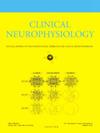Exploring neural variability, movement variability and motor learning in healthy adults and people with stroke
IF 3.7
3区 医学
Q1 CLINICAL NEUROLOGY
引用次数: 0
Abstract
Objective
Investigate the association between neural variability, movement variability and motor learning in people with chronic stroke and healthy adults.
Methods
Thirty participants (17 healthy, 13 stroke) underwent assessments involving transcranial magnetic stimulation and a novel pinch-grip task. Neural variability was approximated as trial-to-trial amplitude variability of motor evoked potentials recorded at the hand following transcranial magnetic stimulation to the motor cortex. Movement variability was assessed as trial-to-trial deviations when performing a pinch grip task. Motor learning was assessed on a pinch grip task to trace an unknown shape, with reward scores provided to performance.
Results
Healthy adults performed better on the motor learning task (t(28) = -1.70, p = 0.05). Greater movement variability was associated with better motor learning in people with stroke (r = -0.68, p = 0.015), but not healthy adults. Neural variability was not found to predict movement variability or motor learning in healthy adults or people with stroke (all p > 0.05).
Conclusion
Increased movement variability supports better motor learning in people with chronic stroke, possibly due to increased exploration of successful movement solutions.
Significance
Movement variability appears worthy of investigation to improve motor learning and recovery from stroke.
探索健康成人和中风患者的神经变异性、运动变异性和运动学习
目的探讨慢性脑卒中患者和健康成人的神经变异性、运动变异性与运动学习的关系。方法30名参与者(17名健康,13名中风)接受了经颅磁刺激和一项新的握紧任务的评估。神经变异性近似为经颅磁刺激运动皮层后在手部记录的运动诱发电位的一次对一次振幅变异性。当执行捏握任务时,运动可变性被评估为试验到试验的偏差。运动学习能力是在一项抓握追踪未知形状的任务中进行评估的,并为表现提供奖励分数。结果健康成人在运动学习任务上表现较好(t(28) = -1.70, p = 0.05)。更大的运动变异性与中风患者更好的运动学习相关(r = -0.68, p = 0.015),但与健康成人无关。未发现神经变异性能预测健康成人或中风患者的运动变异性或运动学习(所有p >;0.05)。结论:增加的运动变异性支持慢性卒中患者更好的运动学习,可能是由于增加了对成功运动解决方案的探索。运动变异性似乎值得研究,以改善运动学习和中风后的恢复。
本文章由计算机程序翻译,如有差异,请以英文原文为准。
求助全文
约1分钟内获得全文
求助全文
来源期刊

Clinical Neurophysiology
医学-临床神经学
CiteScore
8.70
自引率
6.40%
发文量
932
审稿时长
59 days
期刊介绍:
As of January 1999, The journal Electroencephalography and Clinical Neurophysiology, and its two sections Electromyography and Motor Control and Evoked Potentials have amalgamated to become this journal - Clinical Neurophysiology.
Clinical Neurophysiology is the official journal of the International Federation of Clinical Neurophysiology, the Brazilian Society of Clinical Neurophysiology, the Czech Society of Clinical Neurophysiology, the Italian Clinical Neurophysiology Society and the International Society of Intraoperative Neurophysiology.The journal is dedicated to fostering research and disseminating information on all aspects of both normal and abnormal functioning of the nervous system. The key aim of the publication is to disseminate scholarly reports on the pathophysiology underlying diseases of the central and peripheral nervous system of human patients. Clinical trials that use neurophysiological measures to document change are encouraged, as are manuscripts reporting data on integrated neuroimaging of central nervous function including, but not limited to, functional MRI, MEG, EEG, PET and other neuroimaging modalities.
 求助内容:
求助内容: 应助结果提醒方式:
应助结果提醒方式:


